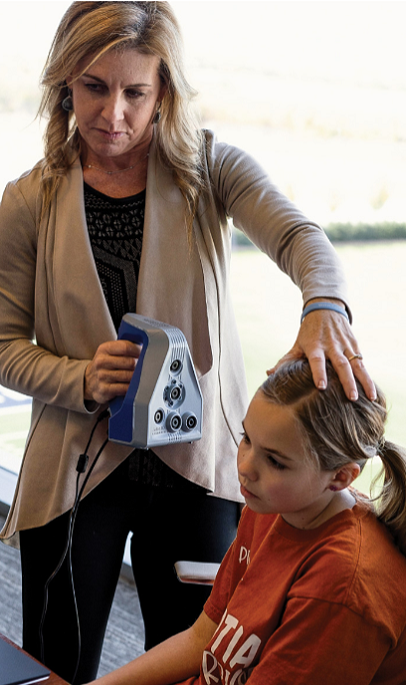[해외]Artec 3D 스캔으로 소이증 환자를 위한 완벽한 귀 삽입물 제작
- 2020-10-19
- 관리자
○ 본문요약 :

8,000명당 약 1명의 아이들이 선천적으로 선천적인 결함으로 인해 실종되거나 기형인 귀를 가지고 태어난다. 여러 해 동안 외과의사들은 이를 고치기 위해 오울러 재구성을 사용해 왔는데, 이를 위해서는 환자의 가슴에서 갈비뼈 연골조각을 떼어내어 건강한 귀 모양으로 조각하고, 두개골 피부 밑으로 미끄러져 들어가 제자리에 꿰매야 한다. 이런 새로운 귀는 보통 때보다 두꺼워 건강한 귀와 어울리지 못하고, 젊은 환자들도 흉부 흉터가 영구히 남아 있는 경우가 많다. 무엇보다 연골이 다 자라지 않아 적어도 8살까지 기다려야 수술을 받을 수 있어 괴롭힘이나 괴롭힘이 생길 수 있다.
3D 프린팅은 이 질환을 돕기 위해 귀 이식 수술을 조작하는 데 사용되어 왔지만, Artec 3D의 새로운 사례 연구에서 알 수 있듯이, 3D 스캐닝도 한 몫 한다. 뇌척수술을 받은 성형외과 의사 캘리포니아에 본사를 둔 셰릴 르윈은 미세조직을 고치는 더 나은 방법을 찾고자 했으며, 늑골 연골이 아닌 다른 것으로 새로운 귀를 만드는 것이 주요한 개선책이 될 것이라고 판단했다.
그녀는 먼저 귀의 합성틀로서 투피스 임플란트를 개발하는 것을 고려했고, 외관 개선과 덜 고통스러운 수술과 같은 장점도 있었지만, 임플란트가 나중에 골절될 가능성은 높았다. 그래서 그녀는 대신에 고밀도 다공성 폴리에틸렌으로 만든 원피스 임플란트를 선택했는데, 이 폴리에틸렌은 의학적으로 안전하며, 박사에 따르면, 르윈 자신은 "평생 지속되도록 만들어졌다"
수술 후 대칭 개선을 위해 수술로 재설계된 베이스로 완성된 "Lewin Ear" 임플란트에 대한 소문이 빠르게 퍼졌지만, Dr. 르윈은 아직 끝나지 않았다.
"손바닥으로 살아있는 귀를 만드는 것은 불행히도 오랜 시간이 걸리는 도전적이면서도 믿을 수 없을 정도로 만족스러운 일이다. 적어도 내 기준을 달성하기 위해서는 그렇다. 내가 행복했던 정확성 수준에 도달하는 데 10년이 넘게 걸렸지만 여전히 결과가 완전히 대칭적이지 않다는 것을 느꼈다"고 그녀는 설명했다. "그래서 나는 그 특별한 것이 무엇인지 정확하게 확신할 수 없었음에도 불구하고 계속 찾아다녔다."
알고 보니, 그 특별한 것은 손에 잡히는 풀 컬러의 아르텍 스페이스 스파이더 3D 스캐너였습니다. Lewin 박사는 연구를 하는 동안 건강관리 3D 스캐닝 애플리케이션에 대한 몇 가지 기사를 발견했고, 이로 인해 그녀는 마이크로티아 환자들을 돕기 위해 Space Spider를 사용하는 영국의 한 병원에 대한 사례 연구를 하게 되었다. 그녀는 현지 아르텍 리셀러 래피드 스캔 3D의 크리스 스트롱과 함께 정확하고 고해상도 스캐너 데모를 주선해 사랑에 빠졌다.
그는 "크리스가 버튼을 누르고 스페이스 스파이더로 스캔을 시작했을 때 화면에 실시간으로 나타나는 디테일의 수준에 놀랐다"고 말했다. "그가 스캔한 모든 것이 완벽하게 포착되었다. 단 몇 초 만에 귀의 유기적인 모양과 특징들이 모두 주워져 3D 스캔으로 변형되어 정말 믿을 수 없을 정도로 실물과 같은 것이 되었다."
About one in every 8,000 children is born with microtia, a birth defect that causes a missing, or malformed, ear. For many years, surgeons have used auricular reconstruction to fix this, which requires a piece of rib cartilage to be taken from the patient’s chest, carved into the shape of a healthy ear, slid under the cranial skin, and then stitched into place, all over the course of two to four surgeries. These new ears are often thicker than normal, don’t match the healthy ear, and the young patients also have permanent chest scarring. On top of everything, because their cartilage has not finished growing, children have to wait until they are at least eight years old to even have the surgeries, which could result in teasing or bullying.
3D printing has been used to fabricate ear implants to help with the condition, but as a new case study from Artec 3D shows, 3D scanning also has a part to play. Craniofacial-trained plastic surgeon Dr. Sheryl Lewin, based in California, wanted to find a better way to fix microtia, and determined that creating a new ear out of something other than rib cartilage would be a major improvement.
She first looked into developing a two-piece implant as a synthetic framework for the ear, and while there were advantages, like improved appearance and less painful surgeries, the likelihood of the implant fracturing later in life was high. So, she turned to one-piece implants instead, made from high-density porous polyethylene that’s medically safe and, according to Dr. Lewin herself, “made to last a lifetime.”
Word about the “Lewin Ear” implant, complete with a surgically redesigned base for improved post-op symmetry, spread quickly, but Dr. Lewin wasn’t done yet.
“Creating lifelike ears by hand is a challenging yet incredibly gratifying task that unfortunately takes a long time. At least to achieve my standards, it does. It had taken me more than a decade to reach the level of exactitude that I was happy with, but I still felt the results weren’t perfectly symmetric,” she explained. “So I kept looking for that special something, even though I wasn’t sure exactly what it would be.”
As it turned out, that special something was the handheld, full-color Artec Space Spider 3D scanner. While researching, Dr. Lewin found some articles on healthcare 3D scanning applications, which led her to a case study about a UK hospital that uses the Space Spider to help microtia patients. She arranged for a demo of the accurate, high-resolution scanner with Chris Strong of local Artec reseller Rapid Scan 3D, and fell in love.
“When Chris pushed the button and began scanning with Space Spider, I was amazed by the level of detail appearing on the screen in real time,” she said. “Everything he scanned was captured just perfectly. In just seconds, the organic shapes and features of the ear were all picked up and transformed into a 3D scan so incredibly lifelike.”
○ 출처 :

















